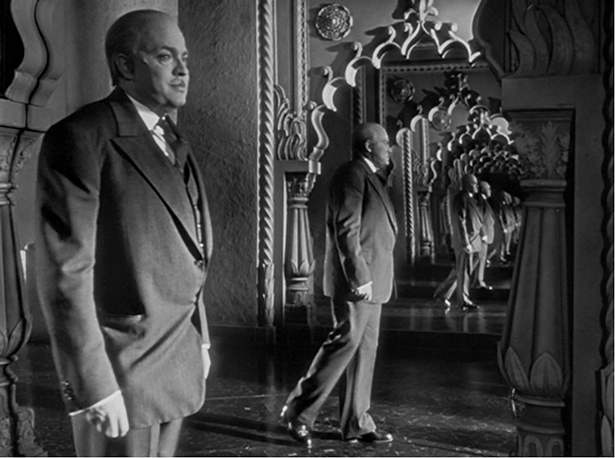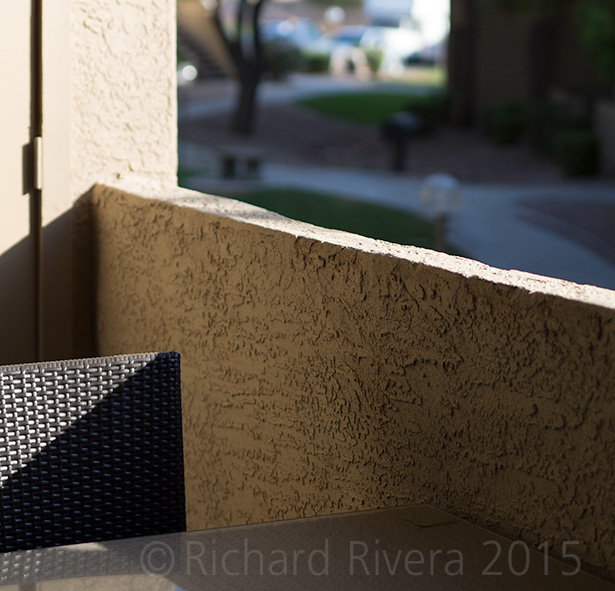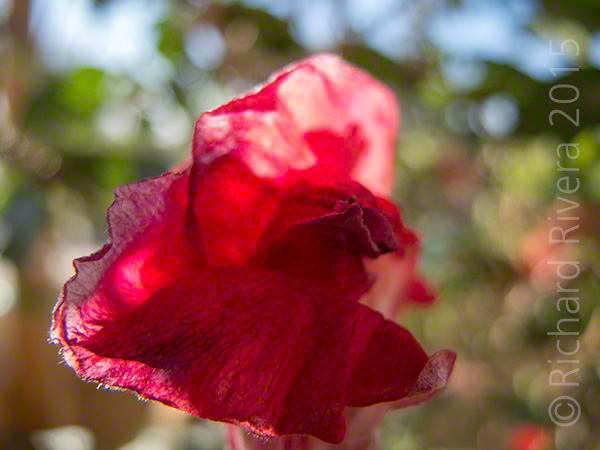
Your feedback and comments are appreciated. See Contact page for e-mails.
Camera Sense Archives

Shallow depth-of-field: Trend or Useful technique?
by Richard Rivera
When 35mm was the ubiquitous format in photography, shallow depth-of-field was normal. The challenge then was to achieve deep focus. Today the reverse is true. The advent of point-and-shoot cameras and cellphone photography have established extensive depth-of-field as the norm. A look of overall sharpness, where objects behind the main subject are of equal importance, has become commonplace in family and non-commercial photos.
However, in recent years the trend in commercial and portrait photography is very shallow depth-of-field, where the subject is in a thin sliver of sharpness and the background is a dreamy blend of colors and shapes. Bokeh, a Japanese word describing the quality of the out-of-focus areas, has also become a common descriptor.
The look of shallow depth-of-field generally separates digital SLR’s and more sophisticated cameras from point-and-shoot and smartphone photography, although there are exceptions. (Such as point-and-shoot cameras with relatively large apertures lenses of f/2.0 or f/1.8, that when used at very close distances for macro achieve a decent level of shallow depth-of-field.) The categories of point-and-shoot and smartphone photography are distinct in the fact that they generate images from very small sensors, roughly the size of a pinkie fingernail, or smaller. The optics (lenses) relative to such minuscule sensors have very short focal lengths, and a characteristic of overall sharpness that often makes it hard to tell what is meant to be the primary focus of the picture. The clue is in the composition.
Larger sensor cameras (such as full-frame 35mm, film cameras, and larger formats) can easily generate images that have a shallow depth-of-field. Experienced photographers know that short focal-length wide-angle lenses inherently exhibit deep depth-of-field while telephoto lenses typically create images with shallower depth-of-field.
Since the days of silent films cinematographers have debated depth-of-field issues and effectively used deep focus to intensify aspects of the story. In 1941 film director Orson Welles had long discussions with his cinematographer, Gregg Toland, regarding shooting scenes for Citizen Kane, one of the great films in movie history. They worked with deep focus to establish the character in his environment. Extended depth-of-field also gives a surrealistic feeling to the scene where the older Kane (Welles) walks down the mirrored hallway in Xanadu and we clearly see mirrored multiples of himself.
In the essay Raising Kane, Pauline Kael writes, “In the thirties, Jean Renoir had been using deep focus (that is, keeping the middle range in the background as clear as the foreground) in a naturalistic way. The light seemed (and often was) ‘natural.’ You looked at a scene, and the drama that you saw going on in it was just part of that scene, and so you had the sense of discovering it for yourself, of seeing drama in the midst of life.”*
Some photographers bemoan the current trend of shallow depth-of-field while others love it. Those reactions are generally about technique for the sake of technique or of being lock-step with trends and yielding to a client’s desire to have a “fashionable” look. The overall sharpness of deep focus is not appropriate for every image and neither is shallow depth-of-field.
Shallow depth-of-field does have its place in photography as a way of isolating a person or object from their surroundings. And deep focus does have its place as a way of grounding the subject in their environment. An experienced photographer knows when to use either shallow depth-of-field or deep focus as a means of communicating their vision.
* * *
*Raising Kane, Pauline Kael. The Citizen Kane Book published by Little, Brown and Company
July 29, 2015




The sample shown above, and detail, indicates the shallow depth-of-field where sharpness is intentionally limited to a specific area of the image. The image above was shot with a micro-four-thirds camera and 45mm f/1.8 lens, wide open. The image shown below of the flower was shot at f/2.0 with a point-and-shoot camera, the Nikon P7800, that uses a tiny sensor (1/1.7”).
APRIL 2015
Book review
iPad software
Movie review
Underwater dual-use camera review
Photo commentary
Book review
PhotoTech commentary
The Interview, movie review
Photo enhancement or management
MAY 2015
Photo Tech commentary
Photo/Art commentary
Camera review
TV series review
JUNE 2015
JULY 2015
AUGUST 2015
SEPTEMBER 2015
Copyright © 2015 Richard Rivera & Rivera Arts Enterprises All rights reserved. No copying or reproduction of any kind without express written permission from Richard Rivera
Legal Disclosure Camera Sense and Eagles of New York are trademarks of Elk Partners LLC